Attractions · Europe · Going Out · Regions · Spain · Western Europe
A very Andalusian UNESCO tour
With an undeniably rich history and cultural legacy, Spain holds more UNESCO World Heritage designations that all but two countries in the world. Of the total 44 designations within Spain, the southernmost region of Andalusia is home to seven of these, second only to the largest region in Spain, Castile y Leon. While Andalusia is an enormous region of nearly 34 thousand square miles, it is quite possible for cultural enthusiast to organise a comfortable tour of the region and sample all seven World Heritage sites, as well as the additional two intangible cultural heritage designations. Or, from a centralised location you could visit many of these sites on easy day trips.
 The Dolmens of Antequera
These megalithic structures date back more than 5,000 years and were just awarded World Heritage status recently in 2016. Three dolmens complete the archeological site near the city of Antequera, and while there are numerous similar examples across the Atlantic and Mediterranean regions, these are unique. 99.9% of dolmens, often built for burial purposes, face the sunrise at the dawn of the equinox; however, two of the three dolmens of Antequera face natural elements of the landscape, including the Lovers Rock appearing like a sleeping giant on the horizon, and the mountains of El Torcal. Both of these natural formations are included in the World Heritage designation around the site.
The Dolmens of Antequera
These megalithic structures date back more than 5,000 years and were just awarded World Heritage status recently in 2016. Three dolmens complete the archeological site near the city of Antequera, and while there are numerous similar examples across the Atlantic and Mediterranean regions, these are unique. 99.9% of dolmens, often built for burial purposes, face the sunrise at the dawn of the equinox; however, two of the three dolmens of Antequera face natural elements of the landscape, including the Lovers Rock appearing like a sleeping giant on the horizon, and the mountains of El Torcal. Both of these natural formations are included in the World Heritage designation around the site.
 Granada: The Alhambra, Generalife and Albaycin
The ancient Moorish fortress of the Alhambra, with the Generalife gardens within its walls, comprise one of the jewels in the crown of this early civilisation. Reconstructed on the ruins of an earlier fortress in the mid-thirteenth century, the Alhambra was an international center of culture and learning from the beginning. It stands as one of the best preserved examples of ancient Arabic architecture and is one of the most visited tourist sites in the world. The adjacent old Arabic neighbourhood, known as the Albaycin, still today feels like a walk back in time with its meandering, maze like cobbled streets, tea houses and artisanal shops.
Granada: The Alhambra, Generalife and Albaycin
The ancient Moorish fortress of the Alhambra, with the Generalife gardens within its walls, comprise one of the jewels in the crown of this early civilisation. Reconstructed on the ruins of an earlier fortress in the mid-thirteenth century, the Alhambra was an international center of culture and learning from the beginning. It stands as one of the best preserved examples of ancient Arabic architecture and is one of the most visited tourist sites in the world. The adjacent old Arabic neighbourhood, known as the Albaycin, still today feels like a walk back in time with its meandering, maze like cobbled streets, tea houses and artisanal shops.
 Cordoba: The Mezquita and the Old Centre
Cordoba, along with Granada, was the other capital of the Moorish kingdom of Al-Andaluz, and an even greater centre of learning and sophistication. Yet the citys history goes well back beyond that time, captured by and ruled by the Romans from 206BC until the year 766 when the Moors claimed it. Much of the old centre of the city has been designated as a World Heritage site because of the well preserved remnants of Roman civilisation, as well as the three cultures of Christianity, Judaism and Islam. The ancient central Mosque of the Mezquita was taken following the Christian reconquest in 1492 and converted into a Christian cathedral; or rather, a Christian cathedral was constructed within the centre of the mosque, creating a unique if somewhat curious monument and evidence of a true clash of civilisations.
Cordoba: The Mezquita and the Old Centre
Cordoba, along with Granada, was the other capital of the Moorish kingdom of Al-Andaluz, and an even greater centre of learning and sophistication. Yet the citys history goes well back beyond that time, captured by and ruled by the Romans from 206BC until the year 766 when the Moors claimed it. Much of the old centre of the city has been designated as a World Heritage site because of the well preserved remnants of Roman civilisation, as well as the three cultures of Christianity, Judaism and Islam. The ancient central Mosque of the Mezquita was taken following the Christian reconquest in 1492 and converted into a Christian cathedral; or rather, a Christian cathedral was constructed within the centre of the mosque, creating a unique if somewhat curious monument and evidence of a true clash of civilisations.
 Seville: The Cathedral and Alcazar
The 15th century cathedral in Seville is one of the most impressive in all of Spain and the largest Gothic church in the world, third largest by any measure, built specifically to demonstrate the citys wealth and grandeur. The cathedral claims to be the final resting place of both Ferdinand III and Christopher Columbus. The adjacent royal palace, the Alcazar, has an even more illustrious history having been developed earlier by the Moorish kings and renowned as one of the most beautiful palaces in Spain. After the Christian reconquest the palace was naturally taken over by the Christian kings and is today the oldest royal palace in Europe still in official use by a ruling monarchy.
Seville: The Cathedral and Alcazar
The 15th century cathedral in Seville is one of the most impressive in all of Spain and the largest Gothic church in the world, third largest by any measure, built specifically to demonstrate the citys wealth and grandeur. The cathedral claims to be the final resting place of both Ferdinand III and Christopher Columbus. The adjacent royal palace, the Alcazar, has an even more illustrious history having been developed earlier by the Moorish kings and renowned as one of the most beautiful palaces in Spain. After the Christian reconquest the palace was naturally taken over by the Christian kings and is today the oldest royal palace in Europe still in official use by a ruling monarchy.
 The Renaissance towns of Ubeda and Baeza
These two towns in the province of Jaen underwent extensive renovations in the 16th century as the Renaissance style was just taking root. Ubeda and Baeza represent some of the earliest examples of Renaissance architecture in all of Spain. Each of the towns contains nearly 50 monuments and hundreds of buildings all in the Renaissance style, while still preserving numerous examples of their Moorish history as well.
Rock art of the Iberian Mediterranean basin
This sixth and final UNESCO World Heritage designation is shared by Andalusia with various other Spanish regions with hundreds of examples of cave art from the late prehistoric stone age period. There is still some academic debate on whether the art dates to the Mesolithic or Neolithic periods, but they are widely accepted to be the most advanced and numerous surviving examples from the general age. All are estimated to be from between 8000BC and 3500BC. The sites in Andalusia, still open to the public, can be found in Almeria, Granada and Jaen provinces.
Additional UNESCO designations in the region
Gibraltar, of course, belongs to the UK and so is not technically Andalusia. But here lies another new World Heritage site only awarded this year, in 2016. The Gorhams Cave Complex on the eastern side of the Rock of Gibralter revealed the first paleontological deposits evidencing Neanderthal occupation over a period of more than 125,000 years.
The Renaissance towns of Ubeda and Baeza
These two towns in the province of Jaen underwent extensive renovations in the 16th century as the Renaissance style was just taking root. Ubeda and Baeza represent some of the earliest examples of Renaissance architecture in all of Spain. Each of the towns contains nearly 50 monuments and hundreds of buildings all in the Renaissance style, while still preserving numerous examples of their Moorish history as well.
Rock art of the Iberian Mediterranean basin
This sixth and final UNESCO World Heritage designation is shared by Andalusia with various other Spanish regions with hundreds of examples of cave art from the late prehistoric stone age period. There is still some academic debate on whether the art dates to the Mesolithic or Neolithic periods, but they are widely accepted to be the most advanced and numerous surviving examples from the general age. All are estimated to be from between 8000BC and 3500BC. The sites in Andalusia, still open to the public, can be found in Almeria, Granada and Jaen provinces.
Additional UNESCO designations in the region
Gibraltar, of course, belongs to the UK and so is not technically Andalusia. But here lies another new World Heritage site only awarded this year, in 2016. The Gorhams Cave Complex on the eastern side of the Rock of Gibralter revealed the first paleontological deposits evidencing Neanderthal occupation over a period of more than 125,000 years.
 Beyond this, there are two additional, intangible cultural heritage designations in Andalusia, one for the Flamenco art form and another for the Mediterranean diet. These may be the easiest to sample during any visit to Andalusia, and indeed they may be difficult to avoid depending on your location within Andalusia or whether you find yourself in the midst of the festival season.
In any case, with a bit of planning and a thirst for cultural learning, any visit to the varied and vibrant region of Andalusia can include a sampling of many or most of these important examples of world heritage. You may even find private accommodation and tour companies that can offer guides and accompanying services for a truly immersive cultural experience.
Alan Hazel is Owner and Director of Cortijo El Carligto.
If you would like to be a guest blogger on A Luxury Travel Blog in order to raise your profile, please contact us.
Beyond this, there are two additional, intangible cultural heritage designations in Andalusia, one for the Flamenco art form and another for the Mediterranean diet. These may be the easiest to sample during any visit to Andalusia, and indeed they may be difficult to avoid depending on your location within Andalusia or whether you find yourself in the midst of the festival season.
In any case, with a bit of planning and a thirst for cultural learning, any visit to the varied and vibrant region of Andalusia can include a sampling of many or most of these important examples of world heritage. You may even find private accommodation and tour companies that can offer guides and accompanying services for a truly immersive cultural experience.
Alan Hazel is Owner and Director of Cortijo El Carligto.
If you would like to be a guest blogger on A Luxury Travel Blog in order to raise your profile, please contact us.
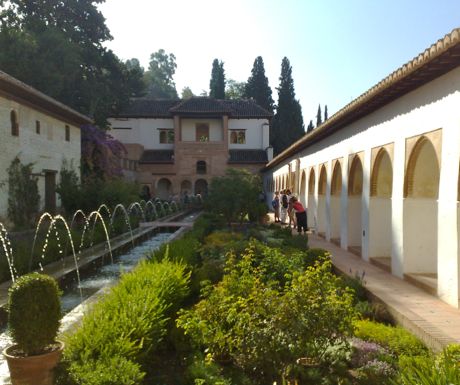 The Dolmens of Antequera
These megalithic structures date back more than 5,000 years and were just awarded World Heritage status recently in 2016. Three dolmens complete the archeological site near the city of Antequera, and while there are numerous similar examples across the Atlantic and Mediterranean regions, these are unique. 99.9% of dolmens, often built for burial purposes, face the sunrise at the dawn of the equinox; however, two of the three dolmens of Antequera face natural elements of the landscape, including the Lovers Rock appearing like a sleeping giant on the horizon, and the mountains of El Torcal. Both of these natural formations are included in the World Heritage designation around the site.
The Dolmens of Antequera
These megalithic structures date back more than 5,000 years and were just awarded World Heritage status recently in 2016. Three dolmens complete the archeological site near the city of Antequera, and while there are numerous similar examples across the Atlantic and Mediterranean regions, these are unique. 99.9% of dolmens, often built for burial purposes, face the sunrise at the dawn of the equinox; however, two of the three dolmens of Antequera face natural elements of the landscape, including the Lovers Rock appearing like a sleeping giant on the horizon, and the mountains of El Torcal. Both of these natural formations are included in the World Heritage designation around the site.
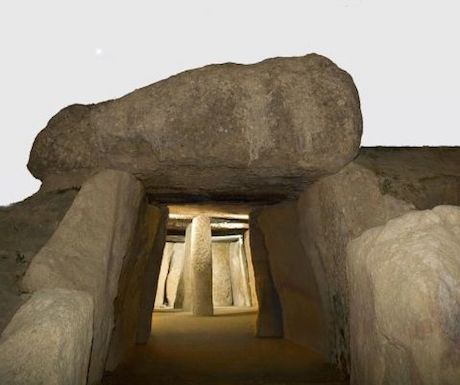 Granada: The Alhambra, Generalife and Albaycin
The ancient Moorish fortress of the Alhambra, with the Generalife gardens within its walls, comprise one of the jewels in the crown of this early civilisation. Reconstructed on the ruins of an earlier fortress in the mid-thirteenth century, the Alhambra was an international center of culture and learning from the beginning. It stands as one of the best preserved examples of ancient Arabic architecture and is one of the most visited tourist sites in the world. The adjacent old Arabic neighbourhood, known as the Albaycin, still today feels like a walk back in time with its meandering, maze like cobbled streets, tea houses and artisanal shops.
Granada: The Alhambra, Generalife and Albaycin
The ancient Moorish fortress of the Alhambra, with the Generalife gardens within its walls, comprise one of the jewels in the crown of this early civilisation. Reconstructed on the ruins of an earlier fortress in the mid-thirteenth century, the Alhambra was an international center of culture and learning from the beginning. It stands as one of the best preserved examples of ancient Arabic architecture and is one of the most visited tourist sites in the world. The adjacent old Arabic neighbourhood, known as the Albaycin, still today feels like a walk back in time with its meandering, maze like cobbled streets, tea houses and artisanal shops.
 Cordoba: The Mezquita and the Old Centre
Cordoba, along with Granada, was the other capital of the Moorish kingdom of Al-Andaluz, and an even greater centre of learning and sophistication. Yet the citys history goes well back beyond that time, captured by and ruled by the Romans from 206BC until the year 766 when the Moors claimed it. Much of the old centre of the city has been designated as a World Heritage site because of the well preserved remnants of Roman civilisation, as well as the three cultures of Christianity, Judaism and Islam. The ancient central Mosque of the Mezquita was taken following the Christian reconquest in 1492 and converted into a Christian cathedral; or rather, a Christian cathedral was constructed within the centre of the mosque, creating a unique if somewhat curious monument and evidence of a true clash of civilisations.
Cordoba: The Mezquita and the Old Centre
Cordoba, along with Granada, was the other capital of the Moorish kingdom of Al-Andaluz, and an even greater centre of learning and sophistication. Yet the citys history goes well back beyond that time, captured by and ruled by the Romans from 206BC until the year 766 when the Moors claimed it. Much of the old centre of the city has been designated as a World Heritage site because of the well preserved remnants of Roman civilisation, as well as the three cultures of Christianity, Judaism and Islam. The ancient central Mosque of the Mezquita was taken following the Christian reconquest in 1492 and converted into a Christian cathedral; or rather, a Christian cathedral was constructed within the centre of the mosque, creating a unique if somewhat curious monument and evidence of a true clash of civilisations.
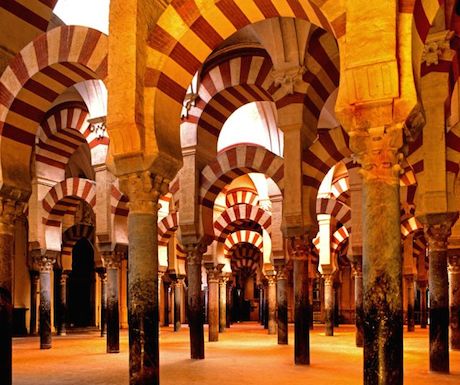 Seville: The Cathedral and Alcazar
The 15th century cathedral in Seville is one of the most impressive in all of Spain and the largest Gothic church in the world, third largest by any measure, built specifically to demonstrate the citys wealth and grandeur. The cathedral claims to be the final resting place of both Ferdinand III and Christopher Columbus. The adjacent royal palace, the Alcazar, has an even more illustrious history having been developed earlier by the Moorish kings and renowned as one of the most beautiful palaces in Spain. After the Christian reconquest the palace was naturally taken over by the Christian kings and is today the oldest royal palace in Europe still in official use by a ruling monarchy.
Seville: The Cathedral and Alcazar
The 15th century cathedral in Seville is one of the most impressive in all of Spain and the largest Gothic church in the world, third largest by any measure, built specifically to demonstrate the citys wealth and grandeur. The cathedral claims to be the final resting place of both Ferdinand III and Christopher Columbus. The adjacent royal palace, the Alcazar, has an even more illustrious history having been developed earlier by the Moorish kings and renowned as one of the most beautiful palaces in Spain. After the Christian reconquest the palace was naturally taken over by the Christian kings and is today the oldest royal palace in Europe still in official use by a ruling monarchy.
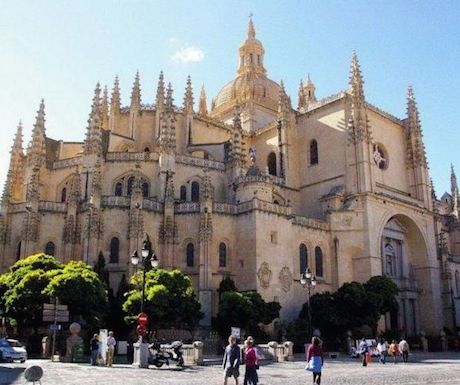 The Renaissance towns of Ubeda and Baeza
These two towns in the province of Jaen underwent extensive renovations in the 16th century as the Renaissance style was just taking root. Ubeda and Baeza represent some of the earliest examples of Renaissance architecture in all of Spain. Each of the towns contains nearly 50 monuments and hundreds of buildings all in the Renaissance style, while still preserving numerous examples of their Moorish history as well.
Rock art of the Iberian Mediterranean basin
This sixth and final UNESCO World Heritage designation is shared by Andalusia with various other Spanish regions with hundreds of examples of cave art from the late prehistoric stone age period. There is still some academic debate on whether the art dates to the Mesolithic or Neolithic periods, but they are widely accepted to be the most advanced and numerous surviving examples from the general age. All are estimated to be from between 8000BC and 3500BC. The sites in Andalusia, still open to the public, can be found in Almeria, Granada and Jaen provinces.
Additional UNESCO designations in the region
Gibraltar, of course, belongs to the UK and so is not technically Andalusia. But here lies another new World Heritage site only awarded this year, in 2016. The Gorhams Cave Complex on the eastern side of the Rock of Gibralter revealed the first paleontological deposits evidencing Neanderthal occupation over a period of more than 125,000 years.
The Renaissance towns of Ubeda and Baeza
These two towns in the province of Jaen underwent extensive renovations in the 16th century as the Renaissance style was just taking root. Ubeda and Baeza represent some of the earliest examples of Renaissance architecture in all of Spain. Each of the towns contains nearly 50 monuments and hundreds of buildings all in the Renaissance style, while still preserving numerous examples of their Moorish history as well.
Rock art of the Iberian Mediterranean basin
This sixth and final UNESCO World Heritage designation is shared by Andalusia with various other Spanish regions with hundreds of examples of cave art from the late prehistoric stone age period. There is still some academic debate on whether the art dates to the Mesolithic or Neolithic periods, but they are widely accepted to be the most advanced and numerous surviving examples from the general age. All are estimated to be from between 8000BC and 3500BC. The sites in Andalusia, still open to the public, can be found in Almeria, Granada and Jaen provinces.
Additional UNESCO designations in the region
Gibraltar, of course, belongs to the UK and so is not technically Andalusia. But here lies another new World Heritage site only awarded this year, in 2016. The Gorhams Cave Complex on the eastern side of the Rock of Gibralter revealed the first paleontological deposits evidencing Neanderthal occupation over a period of more than 125,000 years.
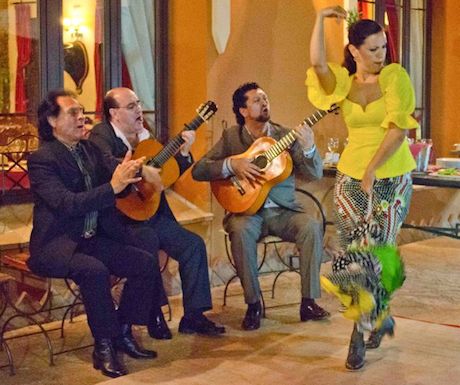 Beyond this, there are two additional, intangible cultural heritage designations in Andalusia, one for the Flamenco art form and another for the Mediterranean diet. These may be the easiest to sample during any visit to Andalusia, and indeed they may be difficult to avoid depending on your location within Andalusia or whether you find yourself in the midst of the festival season.
In any case, with a bit of planning and a thirst for cultural learning, any visit to the varied and vibrant region of Andalusia can include a sampling of many or most of these important examples of world heritage. You may even find private accommodation and tour companies that can offer guides and accompanying services for a truly immersive cultural experience.
Alan Hazel is Owner and Director of Cortijo El Carligto.
If you would like to be a guest blogger on A Luxury Travel Blog in order to raise your profile, please contact us.
Beyond this, there are two additional, intangible cultural heritage designations in Andalusia, one for the Flamenco art form and another for the Mediterranean diet. These may be the easiest to sample during any visit to Andalusia, and indeed they may be difficult to avoid depending on your location within Andalusia or whether you find yourself in the midst of the festival season.
In any case, with a bit of planning and a thirst for cultural learning, any visit to the varied and vibrant region of Andalusia can include a sampling of many or most of these important examples of world heritage. You may even find private accommodation and tour companies that can offer guides and accompanying services for a truly immersive cultural experience.
Alan Hazel is Owner and Director of Cortijo El Carligto.
If you would like to be a guest blogger on A Luxury Travel Blog in order to raise your profile, please contact us.Did you enjoy this article?
Receive similar content direct to your inbox.

